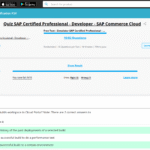Apparel e-commerce competition was fierce in 2023, with sales over $5.8 trillion.[1] To attract customers and be competitive, apparel e-commerce must continuously update its product offerings. This is particularly important because fashion trends change rapidly, and consumers seek new designs and styles frequently. Therefore, businesses must streamline their product development and launch processes to meet these demands.
(Copyright photo from https://www.freepik.com/free-ai-image/fast-fashion-concept-with-full-clothing-store_72616785.htm)
Steps for New Clothing Debuts on E-commerce Platforms
1. Conduct the Market Research and Analysis
First of all, thoroughly researching the market is crucial at this stage. Businesses need to understand industry trends, competitor strategies, and relevant consumer preferences. This step may involve gathering data from online searches, social media, and competitor analysis to determine market gaps and opportunities.
2. Identify the Target Market and Customer Needs
Then, you should use data analytics to analyze apparel e-commerce consumer demographics, behavior, and preferences. For example, you can monitor user interactions and purchases, and then customize the apparel line for client preferences.
- Develop the Product Concept and Design
With an understanding of your target market, developing a product concept that resonates with your audience is the next step. This includes deciding on themes, colors, fabric selection, and unique designs that will make your apparel stand out.
4. Create Samples and Test
Once the design is finalized, a sample is needed to test the fit, fabric choice, and overall look. This step is important to ensure the final product’s quality. Adjustments may be made based on feedback from tests or potential customers.
5. Finalize the Product Design and Specifications
Once feedback from samples is incorporated, the final product design is established. This includes patterns, fabric types, etc. At this stage, technical drawings or tech packs are created to guide the production process, ensuring consistency and quality control.
6. Prepare Marketing Materials and Launch Plans
Successful product launches in apparel e-commerce rely on effective marketing. This step involves making high-quality product images, writing compelling descriptions, and planning promotional activities. A well-thought-out launch plan ensures that the debut captures the attention of the target market.
7. List Products on the E-commerce Platform
The final step is listing the products on the e-commerce platform, ensuring that all necessary information is provided, including accurate sizes, clear images, detailed product descriptions, and shipping details. It’s also important to optimize listings for search to increase visibility among targeted consumers.
Please also read Optimize Garment Production: Simplification Strategies for Efficient Manufacturing.
Speed up Debut on Apparel E-Commerce
The process of launching new products is typically lengthy. Still, certain steps, such as developing product concepts and designs, creating samples, finalizing product designs and specifications, and producing high-quality product images, can be streamlined. This can be achieved by relying on AI tools and fashion design software.
Designers can use AI image generation tools, like Style3D’s iCreate, to create 2D images for inspiration by entering keyword text, reference pictures, sketches, etc. These images can then serve as the design inspiration for 3D design in the 3D fashion design software Style3D Studio. Once the 3D designs are complete, garments are rendered with a tool, iWish. It applies AI rendering to digital models and 3D garments to create effects closely resembling those of real models and clothing. The visuals can then be directly used as product images for new releases in fashion e-commerce.
Style3D’s Solutions
Style3D Studio, iCreate, and Fabric accelerate apparel e-commerce debuts with quick digital garment production and exact fabric digitization. For instance, Style3D’s iCreate transforms text descriptions and sketches into lifelike images for design inspiration. The best 3D fashion design software, Style3D Studio, can completes clothing design and then renders your design on AI models. Moreover, Style3D Fabric uses the Style3D Scanner and Bending & Tensile Testers to capture and quantify fabric attributes, including texture, weight, thickness, and stretch, to create high-fidelity digital fabric models. Therefore, these tools help fashion e-commerce quickly launch new collections online. As a result, it improves their apparel e-commerce platforms’ speed and appeal.
Reference
- Retail e-commerce sales worldwide from 2014 to 2027. Available at https://www.statista.com/statistics/379046/worldwide-retail-e-commerce-sales/














